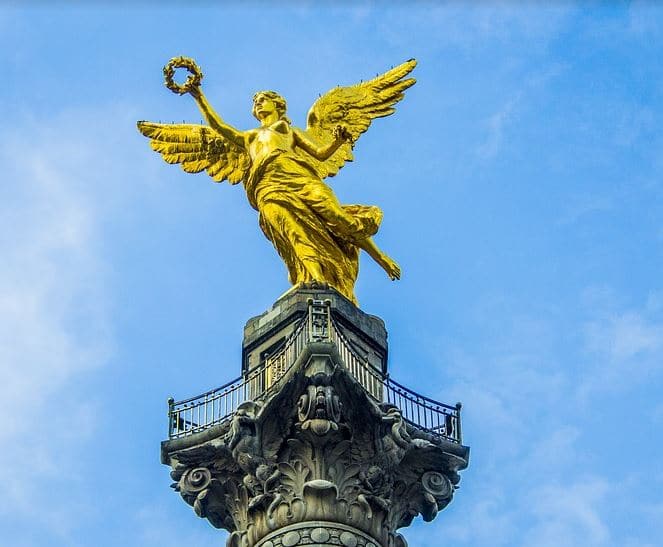Are there any UNESCO World Heritage Sites in Germany?
Post ByAdequate Travel
Summary
Germany is home to some of the world's most iconic UNESCO World Heritage Sites. From magnificent castles to medieval villages and lush forests, discover the best of Germany's incredible cultural and natural heritage!
Before embarking on your journey to germany, make sure to check the latest travel guidelines and entry requirements to ensure a smooth trip
Yes, Germany has several UNESCO World Heritage Sites. These sites are recognized by the United Nations Educational, Scientific and Cultural Organization (UNESCO) for their outstanding cultural or natural significance. Here are some examples of World Heritage Sites in Germany:1. Cologne Cathedral (Cologne): This iconic Gothic cathedral is one of the most famous landmarks in Germany. It is renowned for its stunning architecture, intricate interiors, and its status as the largest Gothic church in Northern Europe. The cathedral was inscribed on the World Heritage list in 1996.2. Aachen Cathedral (Aachen): Aachen Cathedral, also known as the Imperial Cathedral, was the coronation site of German kings and emperors for many centuries. It is a significant example of Carolingian architecture and houses numerous historic artifacts. The cathedral was added to the World Heritage list in 1978.3. Palace and Park of Sanssouci (Potsdam): Sanssouci Palace is an exquisite example of rococo architecture and served as the summer residence of King Frederick the Great of Prussia. The palace is surrounded by a beautiful park with terraced gardens, fountains, and various other buildings. This site was included in the World Heritage list in 1990.4. Würzburg Residence with the Court Gardens and Residence Square (Würzburg): The Würzburg Residence is a splendid Baroque palace that showcases the finest craftsmanship of its time. The residence, along with its gardens and the Residence Square, represents an exceptional work of architecture and design. It was inscribed on the World Heritage list in 1981.5. Town of Bamberg (Bamberg): The historic town of Bamberg is known for its well-preserved medieval architecture. It features a harmonious blend of architectural styles, including Romanesque, Gothic, Renaissance, and Baroque. The town's layout, with its intact medieval street plan, adds to its significance. Bamberg was added to the World Heritage list in 1993.6. Berlin Modernism Housing Estates (Berlin): This World Heritage site consists of six housing estates in Berlin, representing innovative urban design and architecture of the 1920s. These estates were built to provide affordable housing and employ modern architectural concepts. The Berlin Modernism Housing Estates were inscribed on the World Heritage list in 2008.These are just a few examples of Germany's UNESCO World Heritage Sites. The country is home to many others, including the Bauhaus and its sites in Weimar and Dessau, the Historic Centre of Dresden, the Wadden Sea, and more. Each site is recognized for its unique cultural or natural value, contributing to Germany's rich heritage.
Yes, Germany has several UNESCO World Heritage Sites. These sites are recognized by the United Nations Educational, Scientific and Cultural Organization (UNESCO) for their outstanding cultural or natural significance. Here are some examples of World Heritage Sites in Germany:1. Cologne Cathedral (Cologne): This iconic Gothic cathedral is one of the most famous landmarks in Germany. It is renowned for its stunning architecture, intricate interiors, and its status as the largest Gothic church in Northern Europe. The cathedral was inscribed on the World Heritage list in 1996.2. Aachen Cathedral (Aachen): Aachen Cathedral, also known as the Imperial Cathedral, was the coronation site of German kings and emperors for many centuries. It is a significant example of Carolingian architecture and houses numerous historic artifacts. The cathedral was added to the World Heritage list in 1978.3. Palace and Park of Sanssouci (Potsdam): Sanssouci Palace is an exquisite example of rococo architecture and served as the summer residence of King Frederick the Great of Prussia. The palace is surrounded by a beautiful park with terraced gardens, fountains, and various other buildings. This site was included in the World Heritage list in 1990.4. Würzburg Residence with the Court Gardens and Residence Square (Würzburg): The Würzburg Residence is a splendid Baroque palace that showcases the finest craftsmanship of its time. The residence, along with its gardens and the Residence Square, represents an exceptional work of architecture and design. It was inscribed on the World Heritage list in 1981.5. Town of Bamberg (Bamberg): The historic town of Bamberg is known for its well-preserved medieval architecture. It features a harmonious blend of architectural styles, including Romanesque, Gothic, Renaissance, and Baroque. The town's layout, with its intact medieval street plan, adds to its significance. Bamberg was added to the World Heritage list in 1993.6. Berlin Modernism Housing Estates (Berlin): This World Heritage site consists of six housing estates in Berlin, representing innovative urban design and architecture of the 1920s. These estates were built to provide affordable housing and employ modern architectural concepts. The Berlin Modernism Housing Estates were inscribed on the World Heritage list in 2008.These are just a few examples of Germany's UNESCO World Heritage Sites. The country is home to many others, including the Bauhaus and its sites in Weimar and Dessau, the Historic Centre of Dresden, the Wadden Sea, and more. Each site is recognized for its unique cultural or natural value, contributing to Germany's rich heritage.
Suggested Questions
- Ruine Heisterbach, Königswinter: Horror Story, History & Paranomial Activities
- The Lichtenstein Castle, Honau: Horror Story, History & Paranomial Activities
- Hexenturm, Idstein: Horror Story, History & Paranomial Activities
- Kriminalmuseum, Rothenburg ob der Tauber: Horror Story, History & Paranomial Activities
- Burghausen Castle, Burghausen: Horror Story, History & Paranomial Activities
- Zitadelle Spandau, Berlin: Horror Story, History & Paranomial Activities











